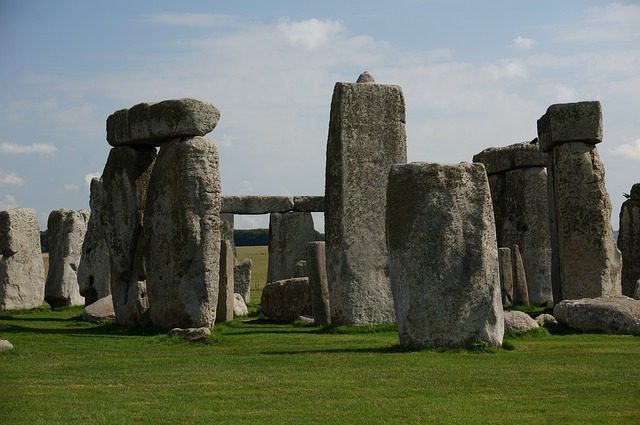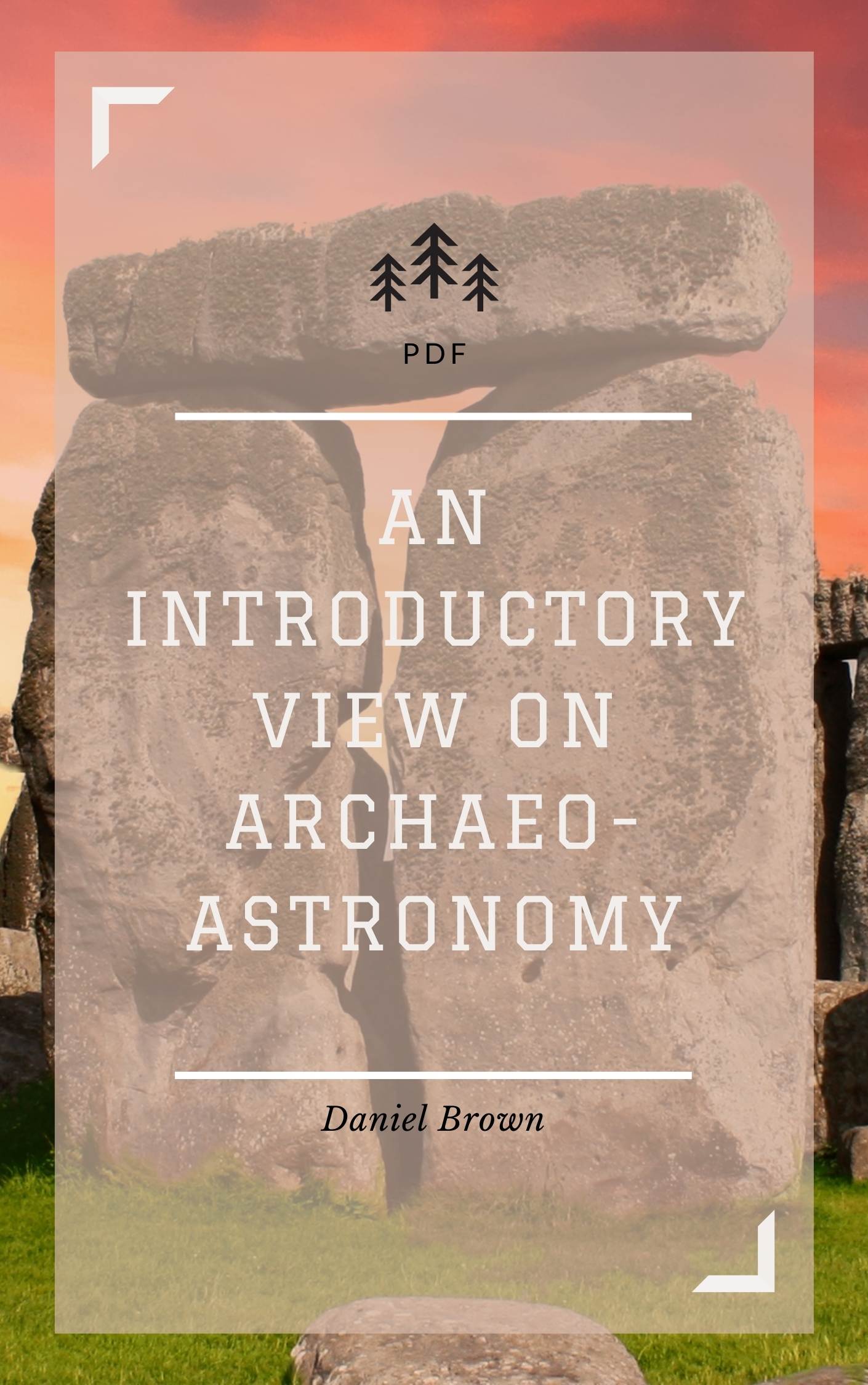Contents
What is Archaeoastronomy?
Archaeoastronomy is a subset of the science that studies how sky-gazing activities have influenced human cultures and technologies throughout history. It brings together elements from archaeology, astronomy, and anthropology to help answer unresolved questions about ancient societies.
Although many archaeologists may study astronomy to understand past beliefs better or learn more about an ancient culture’s daily life, they focus on studying specific artifacts or architectural features in detail. In contrast, archaeoastronomer’s take a much broader scope when analyzing the movements of celestial bodies across the sky.
In this field, astronomers rely on scientific methods such as calculations, geometry, and physics in conjunction with archaeological resources such as written documents physical remains to determine which prehistoric structures reflect astronomical phenomena.

People & Sky At Different Times
When this is possible, it provides insight into the way people thought about the sky at different times in history and their relationship with surrounding landscapes.
In some cases, culture and society have been greatly influenced by the placement of critical structures which align closely with specific celestial events or phenomena such as moonrises or sunsets. These moments may have been viewed as more significant than others for various reasons among different cultures. In certain societies, they were believed to have a direct influence on human experiences and progress. In contrast, other civilizations may have had a more general approach towards predicting coming changes based on previous observations.
This was especially true during prehistoric times when astronomy played a significant role in determining planting seasons, natural cycles, and even direction during the war.
While most modern cultures, such as the Western world, no longer place much importance on celestial events and phenomena, they can still be used to help us understand how our ancestors lived and struggled in the past. By learning about their relationship with the heavens, we’re able to comprehend more about how complex social structures were created and maintained throughout history.
How did it all start?
There are many reasons why early man began studying astronomy, although this is still a topic of debate among historians who specialize in learning this field. Some argue that sky-watching was primarily used as a tool for farmers who needed to make predictions regarding weather conditions that could negatively impact their harvest or other activities that took place outside their homes and villages. Alternatively, others argue that astronomy was most likely used to observe animals or other human tribes instead of the movement of celestial objects.

While most scientists agree on this latter point, because early calendars were oriented towards seasonal cycles rather than lunar cycles, there are still many unanswered questions regarding the origins of archeoastronomy. According to some researchers, sky-watching may have played a significant role in how early society chose their leaders and created new types of religion, which ultimately impacted scientific advancement during ancient times.
The archaeoastronomer believed sky-gazing was crucial because it provided ancient civilizations with insight into how particular celestial objects moved across the sky at different times during history. This allowed societies to predict better when other events would occur, what the weather conditions might be like, and ultimately how it could impact their daily lives.

What an Archaeoastronomer Does, and How To Become One
Archaeoastronomy is the study of ancient knowledge of astronomy and its role in ancient societies. It is a discipline that draws on many different areas, including archaeology, ethnography, anthropology, history, classics, art history, and ethnology. Its origins go back to the 1930s with Alexander Thom‘s surveys of megalithic sites in Scotland, which led him to believe that their orientations were initially intended to serve as astronomical observatories.
Its development has grown steadily since then with new technologies such as computers, satellite imagery, and Geographic Information Systems (GIS). There are currently about 50 professional archaeologists researching this field worldwide.
Two key questions define an archaeoastronomical study:
- The first question relates to the beliefs and practices of ancient civilizations. These can be inferred from remaining records such as textbooks, artwork, literature, and inscriptions and through ethnographic accounts where neighboring cultures provide comparative material for comparison: some sites have been excavated, which leaves little doubt about their purpose. In contrast, others may only infer that astronomy played a role in the site’s construction or use.
- This leads into the second part of archaeoastronomy: how do we know what they believed? Just because there is no direct record does not mean that their belief systems cannot be determined; modern practitioners of archaeoastronomy must make inferences from remaining evidence and knowledge of the broader cultural, social and intellectual milieu.
Archaeoastronomy does have problems similar to those encountered when studying any other aspect of culture or history. For example, the sites may have been modified over time by humans, so they no longer accurately reflect their original usage. On top of this, there are difficulties with reading the materials found at a particular site because not all cultures kept records of what they thought about astronomical events and phenomena. One way of dealing with this issue is using ethnographic studies in conjunction with archaeoastronomy to connect contemporary beliefs in a particular location to their ancient equivalents.
Can I study archeoastronomy online?
Studying astronomy is no longer difficult, thanks to the internet. There are many resources available for you to learn about this fascinating subject from the comfort of your home.
In addition to finding a course or lecture on any topic that interests you, free tools are available, such as the Coursera website that provides astronomy information and updates to help you stay informed.
Here are a few links to online courses about archeoastronomy :
Archaeo-astronomy & science tools
Numerous approaches have been used when investigating archaeological sites for possible evidence of astronomical usage, including reading the site’s construction and layout, studying artifact assemblages, or examining iconography related to astronomy. It is also common to combine these techniques with others from archaeology or anthropology. Archaeoastronomical research often utilizes earth science tools such as satellite images, aerial photography, Global Positioning System (GPS) devices, magnetometers, and statistical analysis software. One significant benefit of using this technology is that it can reveal information that would be otherwise impossible to know about a particular location since many ancient sites are threatened by development, farming, or other activities.
One example of how archaeoastronomy can enhance knowledge of the past was demonstrated during the construction of a new road in Bhutan’s Paro Valley. An archaeological team surveyed and excavated pieces of pottery from the area before construction began. They were able to ascertain that those particular sites were occupied during different periods and show that there had been an increase in social complexity over time at those locations based on ceramic evidence. The resulting survey report allowed Indian engineers who specialize in archaeology to build a bridge that considered any potential problems related to cultural heritage at the site.
Archeoastronomy examples
The Egyptian pyramids and structures like Stonehenge were intentionally aligned with certain celestial bodies and events. This architectural alignment demonstrates how these ancient cultures connected their buildings to the sky.
Ancient civilizations developed calendars based on astronomical observations in order to organize time for planting, harvesting, and religious rituals. Tracking the seasons and cycles of the moon and stars allowed them to plan their activities.
Mythologies and folklore in many ancient cultures featured constellations as characters or omens. People found meaning in the star patterns and wove them into their stories, traditions, and belief systems.
The use of astronomy for navigation also has ancient roots. Observing the positions and movements of celestial bodies enabled early seafaring cultures to orient themselves on land and water.
While the specific expressions varied between cultures, applied astronomy for timekeeping, architecture, navigation, and mythology was prevalent across antiquity. Modern archaeoastronomy continues to uncover how ancient people understood the sky and incorporated those understandings into their societies.
Must-Watch Documentaries -archeoastronomy
As an astronomy enthusiast, I constantly search for documentaries that explore the nexus between archaeology and astronomy. The documentaries on this list provide a window into the fascinating world of prehistoric societies and their interaction with the cosmos.
These movies investigate the different hypotheses and discoveries surrounding some of the most puzzling constructions from antiquity, including the pyramids of Egypt and the stone circles of England. These movies will make for an interesting and thought-provoking viewing experience whether you’re a history buff, a scientific enthusiast, or just interested in the secrets of the past.
NETFLIX
The ancient Egyptian pyramids and any potential astrological and spiritual significance they may have are the subject of the five-part series “The Pyramid Code.”
The long-running television series “Ancient Aliens” explores the idea of early extraterrestrial encounters and their potential effects on human society.
“Secrets of the Pyramids” is a documentary that explores the background and building of the pyramids, as well as current research and speculations.
HBO
The history and building of the Great Pyramid of Giza are examined in the special “Decoding the Great Pyramid” using both live-action and computer-generated imagery.
The possibility of extraterrestrial life and earlier alien visits to Earth are both topics covered in the television series “In Search of Aliens.“
“The Mystery of the Sphinx” is a documentary that examines the background and prevailing beliefs on the Great Sphinx of Giza.
Amazon
The remarkable science of classical astronomy – You will travel the globe with renowned astronomer and astronomy historian Professor Bradley Schaefer of Louisiana State University as he explores the deep connection that ancient cultures had with the night sky.
Dr. Schaefer traces the precise alignment of prehistoric monuments with the Sun and stars and explains the operation of ancient astronomical instruments using well-known locations like Stonehenge and the Great Pyramid, as well as the Star of Bethlehem, archaic calendars, and more.
Additionally, you will discover how ancient astronomers made many accurate observations using only their eyes and how their precise records have proven to be of great value to modern science. Among the topics covered in this course are the genesis of constellations, Polynesian sky navigation, and an ancient Greek computer.
YOUTUBE
Conclusion
Archaeoastronomy is a very marginalized topic in most areas of academia, with it primarily being used as an interesting minor footnote rather than an integral part of the study. Yet despite this, archaeoastronomy is far more than just a field linking astronomy and archaeology. It also connects anthropology and even educational research and might be better described as a form of cultural astronomy.


